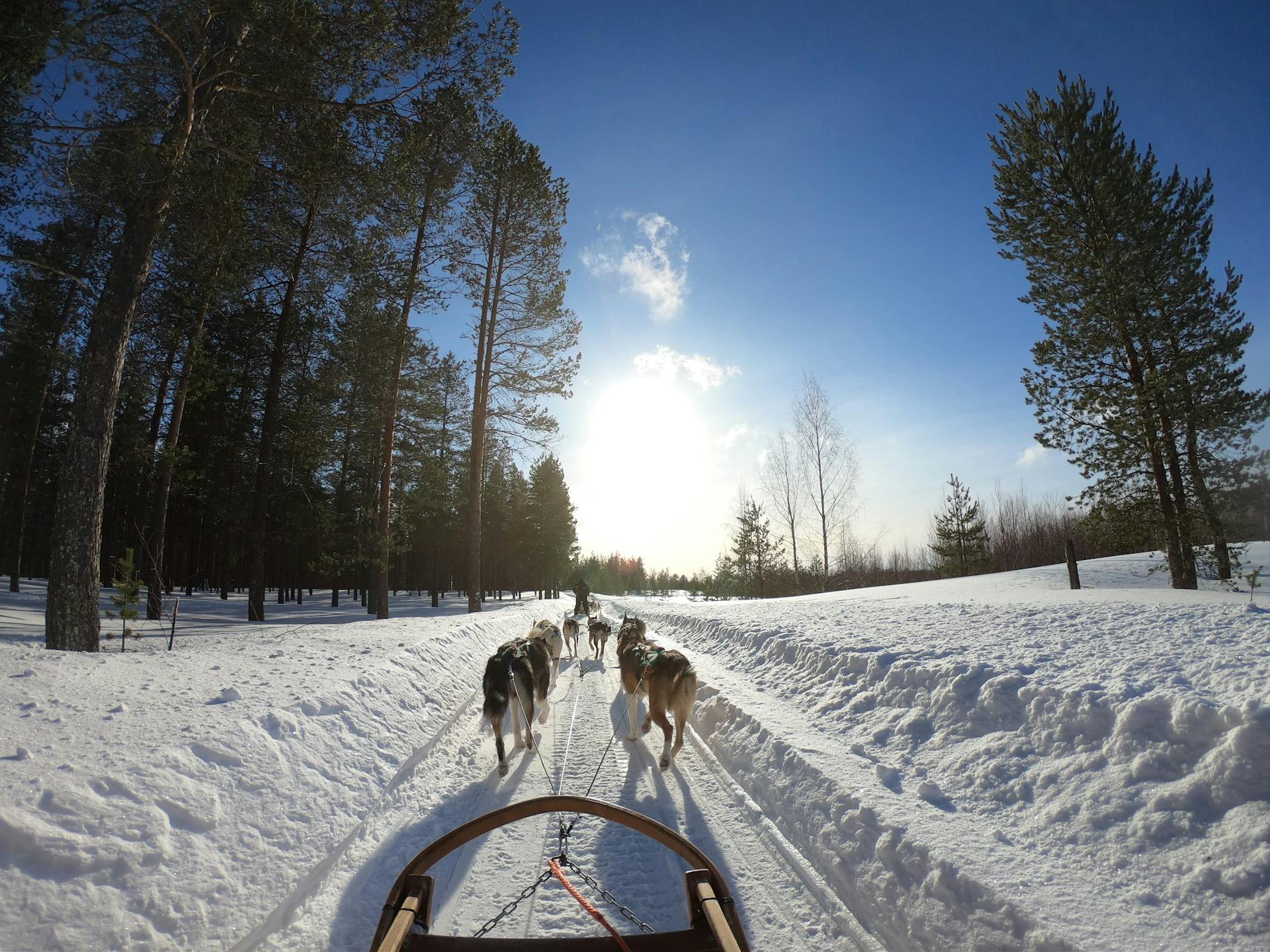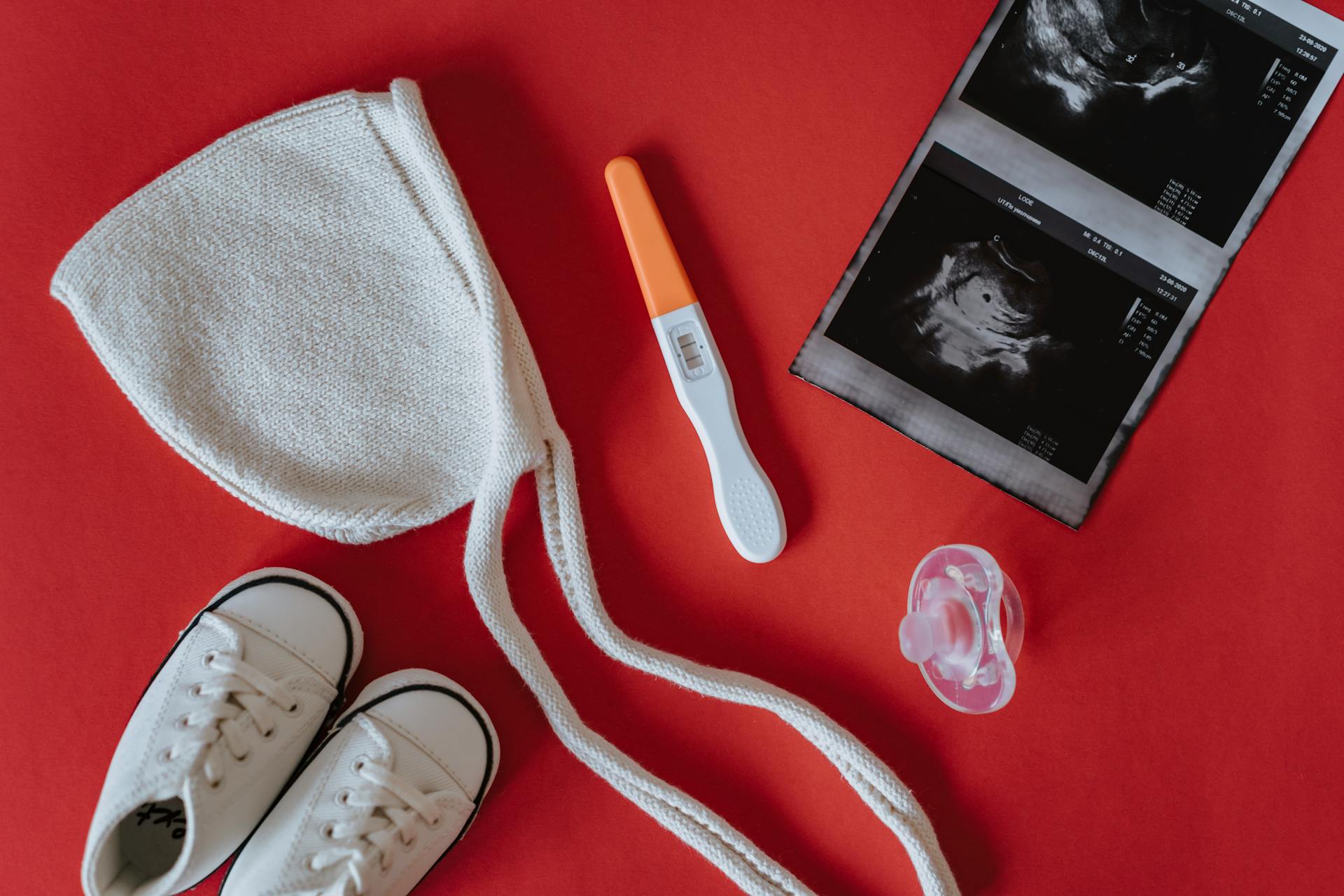
Dogs don't experience labor in the same way humans do, but they do go through a process called whelping. This is a natural part of canine reproduction, where the mother dog gives birth to her puppies.
A whelping can last anywhere from a few hours to several days, depending on the individual dog and litter size.
Just like humans, dogs have a water-like substance that breaks before labor, but it's not exactly the same as a human water break. This substance is often referred to as "whelping water" or "clear discharge."
Understanding Dog Labor
As your dog approaches whelping, it's essential to understand the process and know what to expect. Early labor involves the birth canal softening and tissues becoming more flexible, with the cervix dilating and effacing to make it easier for each puppy to pass into the lower birth canal.
A drop in temperature is one of the first signs of dog labor, typically occurring 12 to 24 hours before active labor. Use a dog thermometer to take your dog's temperature three times a day and maintain a chart for one or two weeks before the due date to identify this drop. A normal temperature range is between 101 and 102.5° F, while a dog whelping can have their temperature drop to between 98 and 99° F.
Nesting is another sign of early labor, where your dog seeks out or tries to create a warm and comfortable place to lie down. She will appear restless and uncomfortable with involuntary contractions that can last anywhere from 6 to 12 hours. This is a crucial period, so make sure you're prepared to provide a safe and comfortable space for her.
As your dog's labor progresses, you may notice changes in her behavior, such as frequent licking of her vulva, panting, and shivering from discomfort. She will also start to discharge a white or clear mucus, which may turn red with blood just before the first puppy comes.
Here are some key signs of early labor to look out for:
- Temperature drop: 98-99° F
- Nesting: seeking out a warm and comfortable place to lie down
- Behavior changes: frequent licking of vulva, panting, and shivering
- Discharge: white or clear mucus, possibly turning red with blood
As active labor begins, strong contractions will start, and puppies will be born. On average, you can expect to deliver a puppy every 30 minutes following the first one. Your priority is helping the puppies breathe and nurse on their mother, which can be a stressful time for both of you.
Take a look at this: Night Time Crate Training for Puppies
Helping a Dog in Labor
Helping a dog in labor can be a nerve-wracking experience, but with the right knowledge, you can ensure a smooth and safe delivery for both mom and puppies.
A common question is how long to wait between puppies, and the answer is about 30 minutes following the first one.
During active labor, your priority is helping the newborn puppies breathe and nurse on their mother. You can save her time and stress by following these steps as each puppy is delivered:
- Help them breathe by removing the amniotic sac from their nose and wiping out any fluid and mucus from their mouth.
- Cut the umbilical cord to ¾ inch and dip it in strong iodine to reduce the risk of infection.
- Help them nurse by rubbing their nose sideways on the nipple if needed to encourage attachment.
- Toss the placenta, which may pass after each puppy, usually within 15 minutes.
If you notice any unusual behavior, such as straining hard for longer than 45 minutes on a single puppy, it's wise to call your vet.
Here are some key things to watch for during labor:
Remember, every situation is different, and it's always best to consult with your vet if you have any concerns.
Water Breaking and Whelping
Water breaking during whelping can be a bit confusing, but it's actually quite straightforward once you know what to look for.
A sac can appear to be "water breaking", but it's actually the amniotic fluid from a broken sac. With a little experience, you'll be able to tell the difference between some lubricating fluid coming from the cervix or amniotic fluid from a broken sac.
If you see a sac or a puppy part along with the fluid, it means a puppy was in the vaginal canal, and you need to start your clock for that first puppy. If the puppy doesn't come out within an hour, you need to see a vet asap.
Here are some key indicators that a puppy is in distress:
- A sac or a puppy part is seen, but no puppy comes within an hour
- The dam is showing signs of distress, such as pacing, panting, or vomiting
If you notice any of these signs, it's best to consult with a vet to ensure the health and safety of both the dam and the puppies.
It's worth noting that the first stage of labor can last 24 hours, and can go totally unnoticed. During this time, the dam's temperature will drop to 98-99°, and she may refuse food and show other signs of labor.
Frequently Asked Questions
Did my dog's water break or is it pee?
If your dog is actively straining during labor, it's likely her water broke. If she's not straining, it's probably just a normal urination.
How long can puppies survive after water breaks?
Puppies can survive in the uterus for up to 24 hours after labor starts. If labor exceeds 3 hours without delivery of the first pup, complications may be present.
Sources
- https://www.midwoofery.com/post/waterbreaking
- https://www.dogbreedinfo.com/whelpingsecondstage.htm
- https://mtmarthavet.com.au/pregnancy-whelping-in-dogs/
- https://www.wikihow.com/Help-Your-Dog-Whelp-or-Deliver-Puppies
- https://www.revivalanimal.com/learning-center/dog-whelping-the-complete-guide-revival-animal-health
Featured Images: pexels.com


